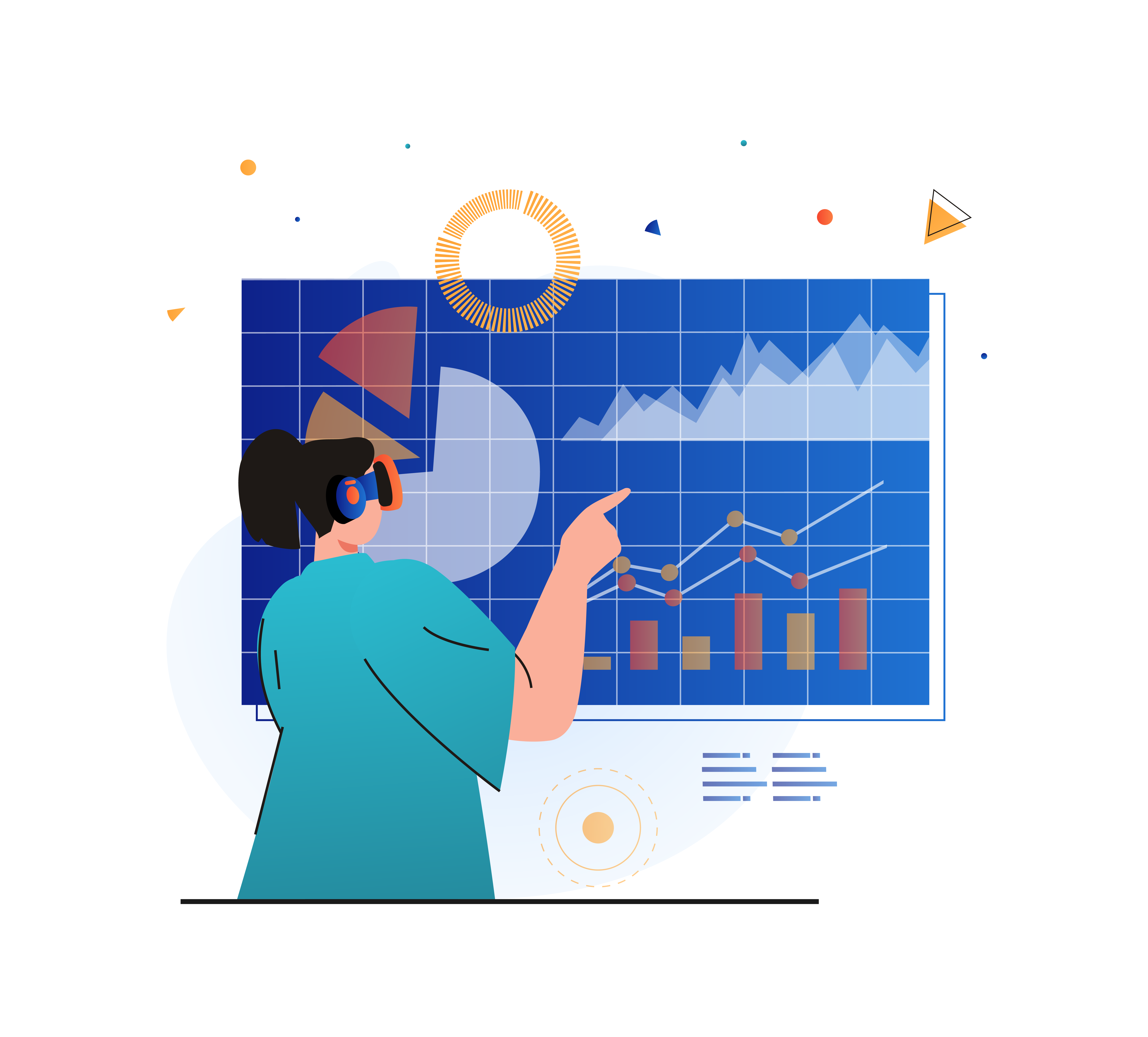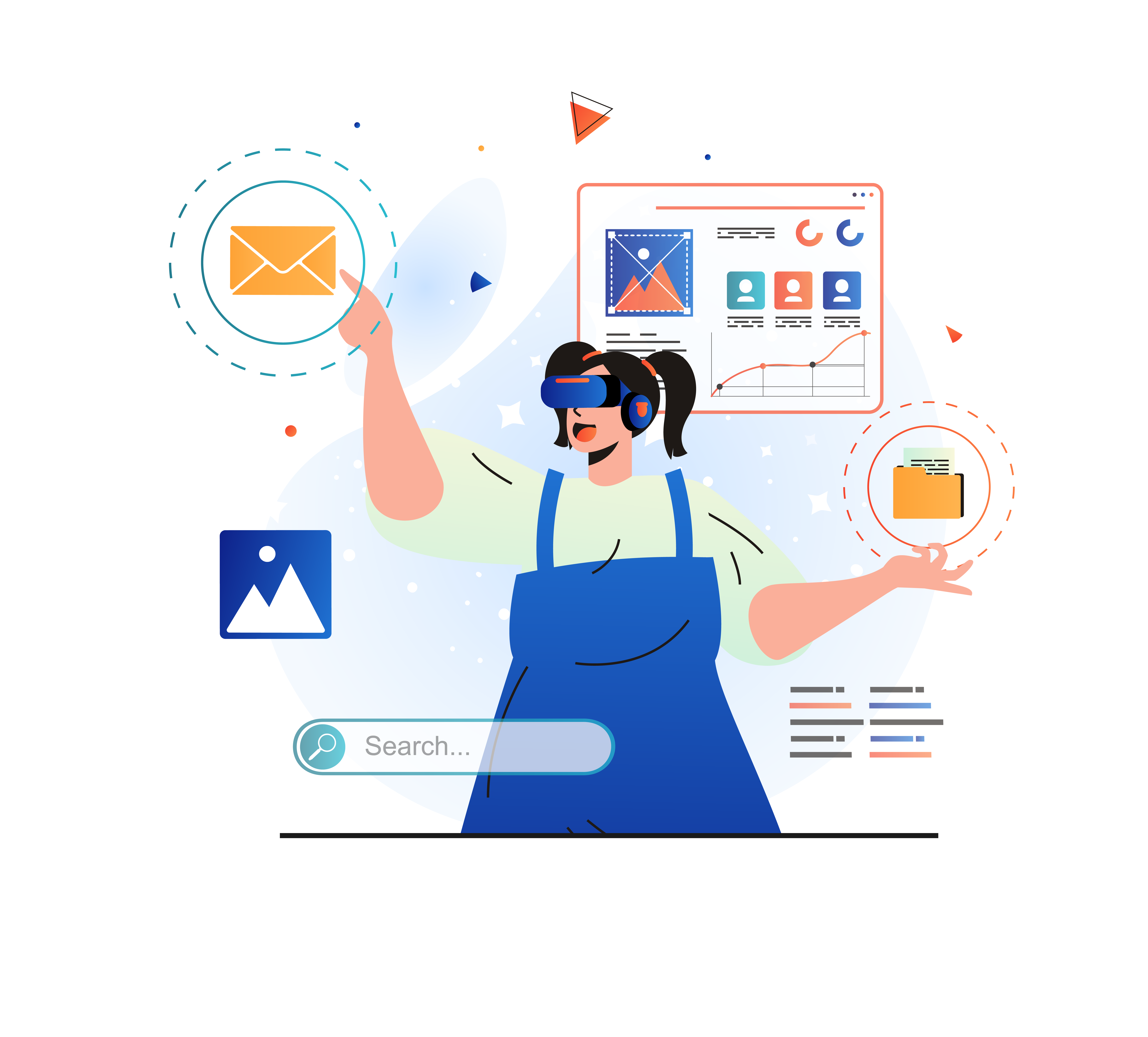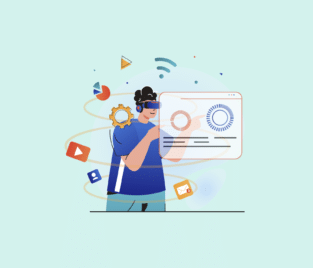Salesforce OmniStudio 2023: 12 Steps to Consider in VR App Development
Using Salesforce OmniStudio in the virtual reality industry (VR) is a thrilling and exciting space to work in. VR devices and apps are quickly entering the digital market, providing customers with mesmerizing experiences designed to simulate natural environments. Simulations can also be imaginary or fantastical and are created with the help of computer-generated sensory inputs.
Salesforce OmniStudio: VR Industry
Are you interested in joining this industry, or do you need a breakdown of if you are on the right track to developing VR apps with OmniStudio? Join us below as we provide a walkthrough of the steps necessary for developing VR apps.

OmniStudio: Starting your VR App Journey
1. Fix your VR Targets First
As with any web application, the first step would be to think about the purpose of developing your VR app and then set realistic goals for the project. Thinking about the grounds for the VR app will help guide your development process. For example, deciding whether your VR app is for training employees, providing entertainment to gamers, or educational material to customers ensures you have solid objectives.
2. VR Platform Choices
There are so many VR platforms that you can choose from when developing your apps. If your goals and objectives are defined, you will have no problem choosing a VR platform for your target audience. Find a breakdown of our trusted favorites below:
3. VR Dev Programming Languages
Although the VR industry is exciting and forward-thinking, it isn’t easy to work in. VR app development includes programming. For this reason, make sure you have someone on your team that can code in one or a few of these languages:
4. Pick a VR Game Engine
You will also need to run your VR apps in a game engine. Game engines are incredibly helpful in simplifying game or VR app development. Make sure to choose a game engine compatible with the programming language you are familiar with and are deciding to use for your VR app development. Some popular game engines out there include:
OmniStudio: Diving into Developing Your VR App
5. Design a VR Environment
The VR field is all about creating realistic experiences for users! For this reason, your VR apps need to focus on UX and UI designs that cater to your target audience. A typical VR environment should include 3D models, textures, lighting, and sound. These elements all combine to create a captivating and realistic experience for users.
6. VR App Development
This stage is all about action! Go forth and create your VR apps with your chosen programming language, game engine, and design elements. Your VR app development team will involve designers, sound engineers, and software developers working together to combine 3D assets, codes, audio & haptic feedback, and physics simulations. Good luck!
OmniStudio: Optimize your VR App
7. QA / Testing Phase
As with all app development, testing your product on users before the release date is wise to eliminate all bugs and ensure your software is of the highest quality. The feedback you get from users is valuable for improving your VR app. Ensure your project team receives all feedback and has strategies to implement feature changes or updates to enhance the customer UX.
8. Improving VR App Performance
You must ensure that you haven’t forgotten about motion sickness as a factor in your VR app development project. You can certainly test for the symptoms during your testing and feedback phase. If you run into this problem, consider rethinking the frame rates of your app. VR apps that provide seamless and realistic user experiences require high performance, but you can optimize areas related to code, draw calls, textures, and models.
9. Connect Users to your VR App
The other half of VR excitement is allowing users to interact in the simulated environment. Ensure that you have added interactive elements to your application to provide the best immersive user experience and native integration with Salesforce:
10. VR App Dev: Cross Platform Accessibility
Test your VR app across a multitude of different devices and platforms. You want your VR app to be as compatible with as many products as possible so your users can access it. It’s important to remember that each VR platform and device have different requirements and performance restrictions. You can plan for these obstacles by committing to a thorough testing plan for your VR app development project.
OmniStudio: Release your VR App

11. Distributing your VR App
Now that your VR app is complete, you need to release it to users. It is finally time to publish your VR app to a distribution platform like an app store. Many app stores are out on the market, so make sure you have read all the guidelines and requirements before you decide on the right one for your VR app.
12. VR App Support & Maintenance
Now that your VR is live does not mean you get to say goodbye. Technology is constantly changing, and if you want your VR app to stand the test of time with users, you must have a team assembled to update and maintain your app. This phase of VR app development is crucial to staying compatible with tech updates.
VR App Success
That’s all it is to VR app development in a very contained high-level guide. As you can see, developing VR apps needs many areas of knowledge from experts to deliver an enjoyable VR experience. The process can also be highly time-consuming.
OmniStudio: VR App Offering
One last thing to consider before you log off to start assembling your team! Does your VR app need to connect to Salesforce, the #1 CRM platform on the market?
If you answered yes, we suggest you look at OmniStudio!
OmniStudio in Salesforce can provide your team with tools and features for creating VR applications. With a focus on optimizing the VR app development process outlined above, OmniStudio can make VR app development easier for businesses that might be limited in VR resources and experience. Some key features and functionalities offered by OmniStudio include:
However, OmniStudio is only one of many platforms that can provide you with these features to aid your VR app development. Some drawbacks to OmniStudio include the following:
These are some legitimate cons and it is essential to carefully consider them before deciding if OmniStudio is the best platform to aid your VR app development.
Titan: A Code-Free Platform
Thank you for reading this article on how to get started in the VR app field, with the pros and cons of choosing OmniStudio as a code-light platform for development. We hope we have provided you with more information at your fingertips to extend your digital experiences.
Do you want no-code integrated Salesforce solutions and to work with any custom or standard Salesforce Object? We have all this and can help you speed up value to market and go to market!
If you liked learning about Omnistudio’s declarative tool, why not read about Titan Web Apps?
Titan is a powerful no-code Salesforce-focused platform providing effortless functionality for all your web projects! We provide custom feature requests whenever needed, minus all the coding. Contact us today through one of our social media channels.

Disclaimer: The comparisons listed in this article are based on information provided by the companies online and online reviews from users. If you found a mistake, please contact us.


